
Parts and accessories for Trans Ams, Fieros and Corvettes





 |
||||
Parts and accessories for Trans Ams, Fieros and Corvettes |
||||
 |
 |
 |
 |
 |
LT SERIES GEN II SMALL BLOCK CHEVROLET INFORMATION |
|||
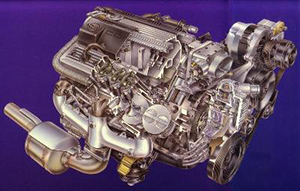 |
The LT1 series Gen II small block Chevrolet is very similar to the standard small block. They use similar internals, exhaust manifolds and oil pans. The main difference in the LT1 is the reverse cooling design, which cools the cylinder heads first, then the block. Because of this, there is no water that passes through the intake manifold. Coolant is transferred from head to head by a steam line on the back of heads. The thermostat is located on the water pump. Also, the water pump is cam-driven, rather than belt driven. In 1996, an LT4 was available in the Corvette. The LT4 had the same features as the LT1, but had larger valves, larger intake ports that were located higher, and an intake to match. The LT4 also came with a more aggressive cam to enhance the better heads. The most common technical questions we receive is about balancer/hubs, timing covers and timing sets, and it can get confusing. | ||
| BLOCK CASTING #'S | HEAD CASTING #'S | INTAKE MANIFOLDS | |
| OPTISPARKS | WATER PUMPS | FUEL RAILS | FRONT DRIVES/HUBS |
|
|||||||||||||||||||||||||
LT1 GEN II SMALL BLOCK CHEVY CYLINDER HEAD CASTING #'S |
|||||
| CASTING # | YEAR | CID | NOTES | ||
| 10125320 | 94-96 | 350 | LT1, Cast Iron, B-Body | ||
| 10128374 | 92-97 | 350 | LT1, Aluminum, 175/68cc ports, 53cc chamber | ||
| 10205245 | 93 | 350 | LT1, Aluminum 175/68cc ports | ||
| 10207643 | 94-96 | 350 | LT1, Aluminum, 175/68 cc ports | ||
| 10208890 | 94-96 | 265 | L99, Cast Iron | ||
| 10239902 | 96 | 350 | LT4, Aluminum, 195cc ports, 54.4cc chamber | ||
| 12529742 | 95-96 | 265 | L99, Cast Iron | ||
| 12551561 | 96 | 350 | LT1, aluminum | ||
| 12554290 | 94-96 | 350 | LT1, Cast Iron, B-Body | ||
| 12554291 | 95-96 | 265 | L99, Cast Iron | ||
| 12555690 | 96 | 350 | LT4, aluminum | ||
| 12551561 | 96 | 350 | LT1, aluminum | ||
| 12554290 | 94-96 | 350 | LT1, Cast Iron, B-Body | ||
| 14088526 | 92-97 | 350 | LT1, Aluminum | ||
|
|||||
|
|||||||||
|
||||||||||||
|
|||||||||||||||||||||||||||||||||||||||||||||
|
|||||||||||||||||||||||||||||
LT1 FRONT TIMING COVERS |
||
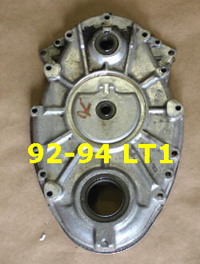 |
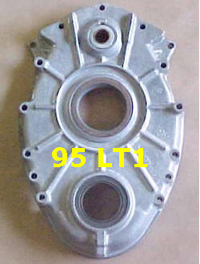 |
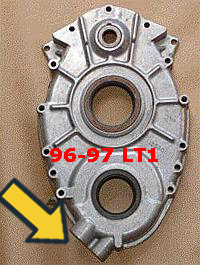 |
| There are 3 LT1 timing covers. 92-94 is for factory non-vented Optisparks. 95 is for factory vented Optisparks that are OBD 1. 96-97 are for factory vented Optisparks that are OBD 2. The OBD 2 cover (96-97) has a provision for the crankshaft sensor, none of the other covers work with the crank sensor. The exception is the 94 Caprice/Roadmaster/Impala, which uses the 95 timing cover and optispark. | ||
| Some advantages of the vented Optispark are (1) the ventilation system allows for a longer life span and less misfires, (2) the bearing and drive method allow for longer bearing life, and (3) the larger diameter front seal reduces the change of oil leakage through the cover and into the Optispark. You can convert from a non-vented Optispark to a vented Optispark by changing the Optispark unit, the front timing cover to a 95-97 model, camshaft timing gear to a 95-97 model, adding the vacuum lines, and changing the Optispark extension harness to the later model. The camshaft does not necessarily need to be changed, but you will need to drill the cam centering hole deeper for the Optispark unit to slide in all of the way. MSD now offers a hybrid vented optispark for 92-94 LT1 engines, which uses the small seal and spline drive, but the housing and cap are vented, and no changes are necessary to the timing set, cam or cover. | ||
LT1 TIMING SETS |
||
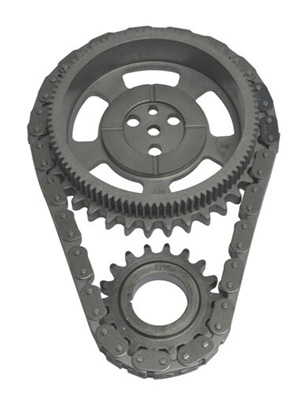 |
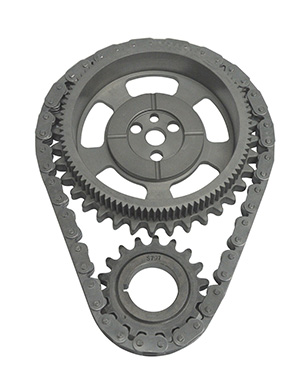 |
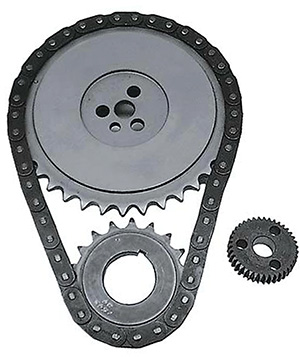 |
| 92-94 LT1 Camaro/Trans Am/Corvette | 95-97 LT1 Camaro/Trans Am, 94-96 LT1 Corvette, 94-96 LT1 Impala/Caprice/Fleetwood/Roadmaster |
96 LT4 Corvette |
| 92-94 LT1 models had a spline drive cam gear, 95-97 LT1 models had an open center cam gear. 94 B-Body models (Impala/Caprice/Fleetwood/Roadmster) used the 95 model set as well as the cover. The 96 LT4 timing set differs in a few ways. First, it has a different pitch gearset for higher RPM, which means the gear pressed on the engine shaft is different. The set is also a single roller vs. a link style chain. | ||
|
|
(C) 2021, Nook and Tranny LLC
|